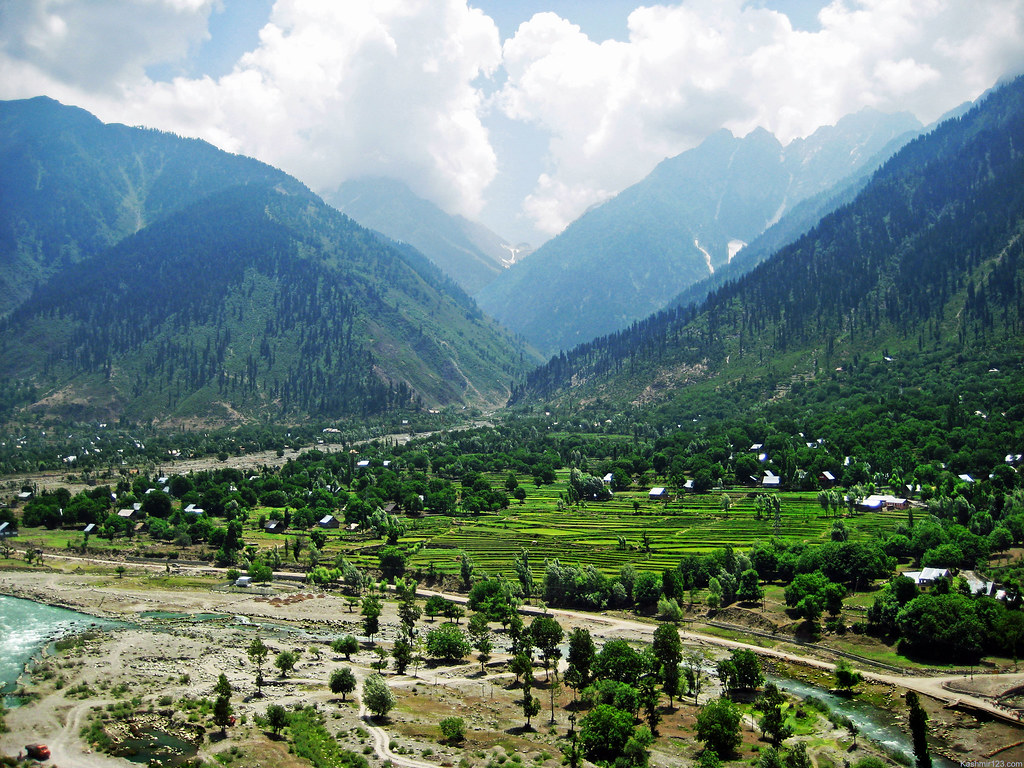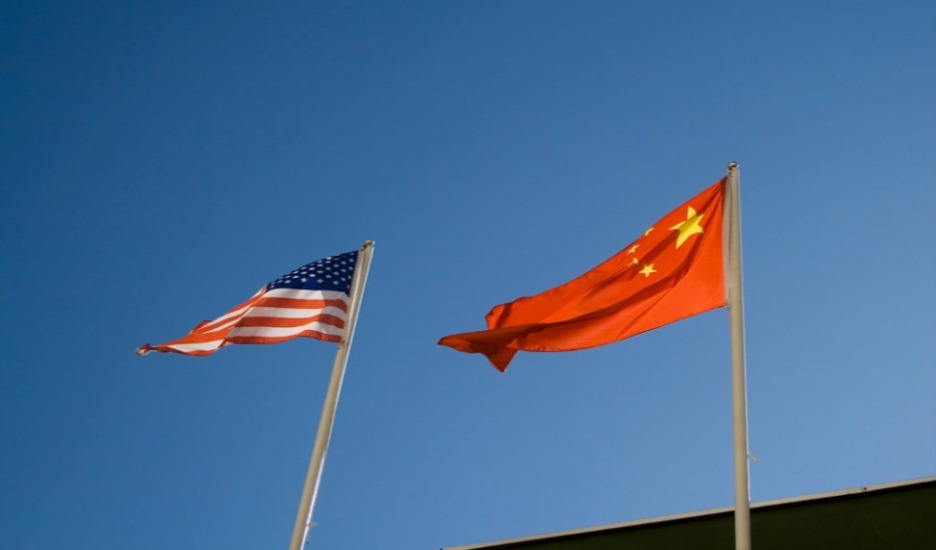How the Indian Government Changed the Legal Status of Jammu and Kashmir
The disputed territory of the Kashmir Valley has long been a cause of tension and armed conflict between India and Pakistan. The United Nations has stated it could be “one of the most militarized zones in the world.” Within India, the valley is located in the state of Jammu and Kashmir, which until recently enjoyed a special constitutional status that granted it more autonomy than other Indian states. On Aug.

Published by The Lawfare Institute
in Cooperation With

The disputed territory of the Kashmir Valley has long been a cause of tension and armed conflict between India and Pakistan. The United Nations has stated it could be “one of the most militarized zones in the world.” Within India, the valley is located in the state of Jammu and Kashmir, which until recently enjoyed a special constitutional status that granted it more autonomy than other Indian states. On Aug. 5, the Indian government revoked this special status through a series of actions and is reorganizing the former state so as to give the central government more control. This move has sparked unrest within the valley and elicited retaliatory diplomatic and trade measures from Pakistan.
Christine Fair explains the history and politics of the move in detail here. In this post, I explain the legal background of Jammu and Kashmir’s status, the mechanics through which the Indian government acted, and the open questions around the government’s legal reasoning and likely next steps.
Background: Jammu and Kashmir’s Special Status
In 1947, the Indian subcontinent—newly independent from the British Empire—contained not just the “infant nations” of India and Pakistan but also nearly 600 princely states, which were given the option of acceding to either India or Pakistan or remaining independent. The ruler of Kashmir, acting in the midst of a Pakistan-backed invasion, acceded to India in return for military assistance and a guarantee that the new state would largely retain its autonomy within India. (For a brief historical explainer, read this article.)
This autonomy was granted under Article 370 of the Indian Constitution (p.286), titled “Temporary provisions with respect to the State of Jammu and Kashmir.” Article 370(1) restricted both the applicability of the Indian Constitution to the state and the powers of the national government within the state to limited domains such as defense, foreign affairs and communications. (For a detailed history, see this book.)
Article 370(1)(c) explicitly lists the two constitutional articles that will apply to Jammu and Kashmir: Article 1 (which enumerates India’s constituent divisions) and Article 370 itself. Article 370(1)(d) (p.287–88) explains how other constitutional provisions may discretionarily be applied to the state: as modified by the president of India through an order, along with the “concurrence” of the “Government of the State.” In this way, Article 370(1)(d) has been used to “incorporate” other provisions of the constitution to Jammu and Kashmir.
The most important constitutional language for the present matter is in Article 370(3) (p.288), which describes how the article could “cease to be operative” or be operative only in part: The president would have to issue a “public notification,” but the “recommendation” of the “Constituent Assembly of the State” would be “necessary before the President issue[d] such a notification” (emphasis added).
However, the constituent assembly of Jammu and Kashmir dissolved in 1957, after the state’s constitution was adopted and came into force. This would seem to render Article 370(3) dead letter, since there is no constituent assembly to make a recommendation to the president. In 2017, the Indian Supreme Court, in the case State Bank of India v. Santosh Gupta, observed that even though Article 370 was labeled a “[t]emporary provision[]” and the constituent assembly had dissolved, the article “continue[s] to be in force” (¶12)—thus indicating it had attained permanent status.
Moreover, with regard to 370(1)(d)’s threshold criteria for application of other constitutional provisions to Jammu and Kashmir, there is presently no “Government of the State” in Jammu and Kashmir to “concur” with the president. In June 2018, the majority coalition ruling the state split up, and in November 2018, the state’s legislature was dissolved. Since then, the state has been under the direct rule of the state’s governor, a position appointed by the national government. This method of administration is termed “president’s rule” in India.
For a long time, the autonomous nature of Jammu and Kashmir, the only Muslim-majority state in India, has been politically contentious. Leaders of the right-wing Bharatiya Janata Party (BJP), which has been ruling India since 2014, repeatedly proclaimed that Jammu and Kashmir’s autonomous status was enabling terrorism within the state while also keeping it poor. The party’s manifesto for the most recent general elections, which were held earlier in 2019, explicitly promised to abrogate Article 370 in order to “integrate” Jammu and Kashmir into the rest of India. Also earlier in 2019, a suicide bombing in Kashmir was backed by an organization based in Pakistan and led to an aerial skirmish between the neighbors. On the campaign trail, the BJP was able to turn to that episode to further highlight the need to abolish Kashmir’s “special status” and make it fully part of India.
The Indian Government’s Actions
That’s what happened on Aug. 5, when the president of India, Ram Nath Kovind, issued Presidential Order C.O. 272. Since 370(1)(d) grants the president the authority to apply other constitutional provisions “as modified” to Jammu and Kashmir (provided the president acts in “concurrence” with the state government), C.O. 272 used this authority to amend a separate constitutional provision, Article 367 (p.239), not through the regular constitutional amendment procedure but to apply to Jammu and Kashmir.
Article 367 provides guidelines on interpreting the constitution and earlier contained three clauses. C.O. 272 added a fourth clause to this article, only for the “purposes of this Constitution as it applies in relation to the State of Jammu and Kashmir.” According to C.O. 272, Article 367(4)(c) shall state that “references to the Government of [Jammu and Kashmir] shall be construed as including references to the Governor of Jammu and Kashmir” (emphasis added)—of relevance in following 370(1)(d)’s requirement of the president obtaining the “concurrence” of the government of the state. Additionally, Article 367(4)(d) shall state that the expression “‘Constituent Assembly of the State’ ... shall read ‘Legislative Assembly of the State’”—of relevance in following Article 370(3)’s requirement of state-level “recommendation” to the president for ceasing the operation of all or part of Article 370.
Therefore, in C.O. 272, the president drew on the authority given him by Article 370(1)(d) for modifying other parts of the constitution in relation to Jammu and Kashmir and used it to modify Article 367. And the modifications to Article 367 ensure that, going forward, amendments to Article 370 itself will be less cumbersome because they will not require actions from the long-dissolved constituent assembly; instead, the state’s legislature will suffice.
With this framework in place, later on Aug. 5, the Rajya Sabha (the upper chamber of India’s bicameral legislature) passed a statutory resolution. This resolution passed the legislature’s lower chamber, the Lok Sabha, one day later. The resolution “recommend[ed]” the president of India use his Article 370(3) amending powers to abrogate much of Article 370. Because the concurrence of the “Constituent Assembly” of Jammu and Kashmir was no longer needed to amend Article 370 and the “Legislative Assembly” of the state would suffice under C.O. 272 and, moreover, because the state’s legislature was dissolved and the state was under direct national rule, the governor’s concurrence would also suffice—so the Indian government’s legal reasoning indicates.
On the same day, Aug. 6, Presidential Order C.O. 273 was issued and stated that “[a]ll provisions of this Constitution, as amended from time to time, without any modifications or exceptions, shall apply to the State of Jammu and Kashmir,” thus revoking the state’s special status. Over the same period, the Jammu and Kashmir Reorganisation Act, 2019, also passed Parliament. The goal of this legislation was to reorganize Jammu and Kashmir from being one state—autonomous or nonautonomous—into two union territories (units of governance that are always under direct national control) (¶3–4). One union territory, which would include the Kashmir Valley, would have a legislature, whereas the other, Ladakh (a mountainous region bordering China that has also seen some border skirmishes), would be without a legislature.
Open Questions and Likely Next Steps
The Indian government’s legal rationale has raised plenty of eyebrows, even as Home Minister Amit Shah—who introduced the statutory resolution and the reorganization act in Parliament—expressed confidence that the government’s actions “would pass every legal scrutiny.”
One major question is over the Indian government’s interpretations of “Government of State” to mean the centrally appointed governor of the state. Since governors are New Delhi’s representatives to the states and are appointed by the national government, some Indian constitutional lawyers have argued this is equivalent to the national government consulting itself and, thus, violates the tenets of federalism.
Even if one moves beyond consulting governors, there are questions over the legitimacy of taking such actions when the state’s government has dissolved. The president’s rule is meant to be a temporary solution until an elected government can be formed; can state-altering and state-ending decisions be taken during this period of ostensible limbo?
There are also doubts about Article 367(4)(d)’s equating the state’s constituent assembly with its legislative assembly—especially given the Supreme Court has already weighed in, on the article’s attained permanence in Santosh Gupta.
The government’s actions are probably headed for Supreme Court evaluation in the near future. Some lawyers have already filed petitions while other groups are apparently working on petitions too.
In the meantime, the Indian government has moved thousands of troops to Kashmir to quell any potential protests, cut off the valley’s internet and communications access and placed strict curfews on residents’ travel. It has placed prominent Kashmiri politicians, including former chief ministers of the state such as Omar Abdullah and Mehbooba Mufti, under house arrest. The U.N. special rapporteur on the freedom of opinion and expression, David Kaye, has stated that the Indian government has not allowed him to conduct an official visit yet. Ground reports out of Kashmir since the revocation of its special status reveal that at least one civilian has died and several have been fired at by Indian military forces.


.jpg?sfvrsn=5a43131e_9)


